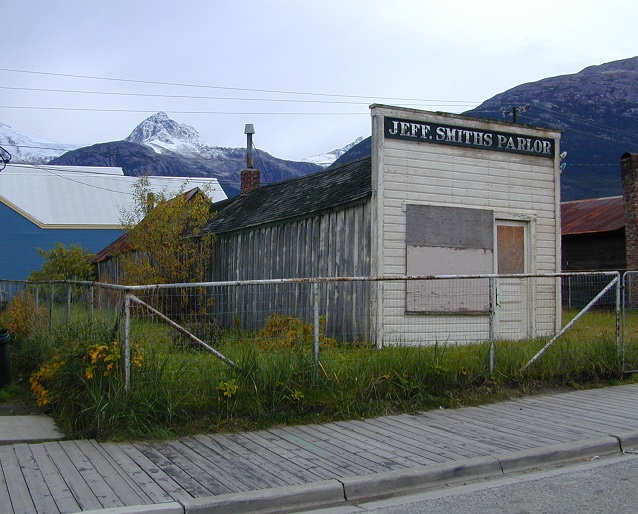
NPS photo
Where is this site?
Jeff. Smith’s Parlor is located on 2nd Avenue between Broadway and State Streets in Skagway, Alaska.
Why was this site excavated?
Jeff. Smith’s Parlor was donated to the National Park Service (NPS) in 2008. Plans were put in place to open the museum to the public and provide tours; however, before it could be opened, the building had to be restored and put on a permanent foundation to protect both visitors to the museum and the structure itself. The National Historic Preservation Act requires all federal organizations, like the NPS, to assess impacts to archeological resources when a historic structure is rehabilitated. Because the construction of the foundation would destroy the cultural materials beneath the parlor, park archeologists excavated the site to obtain as much data as possible before it was lost.
More about the site
During the Klondike Gold Rush, this building served as the gambling parlor of notorious conman Jefferson Randolph Smith, commonly known as "Soapy." It served a variety of purposes before becoming a museum in the 1930s. Originally located on 6th Avenue, the building moved to its current location on 2nd Avenue in 1964. This means that the archeology beneath the parlor has no relation to the time Soapy spent in Skagway. Instead, it highlights Skagway’s unique geological story. The Skagway Valley was carved entirely by glaciers. Due to glacial rebound, the rise of land that was once depressed by glaciers, the entire town now sits about six feet higher than it did at the time of the Gold Rush. Today, 2nd Avenue is well above the water, but historically, the town’s lower elevation caused this street to be located below the high tide line. Buildings in the tidal flats area were constructed on pilings to accommodate the changing tide.
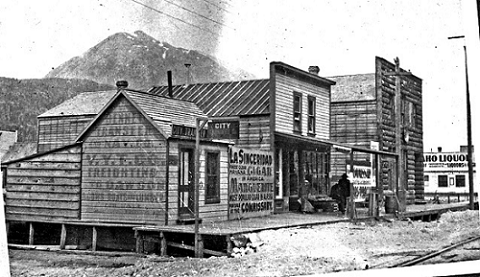
National Park Service, Klondike Gold Rush National Historical Park, George and Edna Rapuzzi Collection, KLGO 59783a. Gift of the Rasmuson Foundation.
This lot served a variety of purposes throughout Skagway’s history; the first structure was built in 1897 and featured a sign that read “Hay Feed and Groceries.” By 1908, the original building was demolished and a restaurant appeared in its place to serve the nearby Dewey Hotel. These buildings were eventually destroyed by fire in 1940, just years before the beginning of the U.S. Army’s occupation of Skagway during World War II. After, the lot remained vacant until the relocation of Jeff. Smith’s Parlor. The land’s rise in elevation, in addition to the deposition of several layers of fill, enabled the building to be moved to 2nd Avenue where it was closer to the docks and the incoming tourists.
What did the park find during this excavation?
The archeologists that excavated at Jeff. Smith’s Parlor found plenty of historic artifacts spanning the Gold Rush era to the 1960s. However, it’s the stratigraphy, or layers of soil, and not the artifacts that tell this lot’s story. Each soil deposit represents a different period in time, so when archeologists excavate, they carefully peel back one layer at a time to distinguish artifacts from each time period. These layers differ from one another in color, texture, and size based on the different cultural and natural materials they contain and the way they were deposited.

NPS photos
Archeologists excavated one layer at a time. First, they dug through several layers of fill to a wooden feature and then they went through the feature to the natural sand. The top deposit related to the most recent period of time. This layer contained a number of Gold Rush era artifacts because George Rapuzzi, one of the owners of Jeff. Smith’s Parlor Museum, decorated the lawn with items he collected. Below the modern ground surface were several layers of fill, the earliest of which dated to the U.S. Army’s occupation in Skagway during World War II. The fill built up the land and made it suitable for construction.
After digging through the layers of fill, the archeologists reached the Gold Rush era deposit. Because this lot was part of the tidal flats in 1897-1898, soil was naturally deposited as it was washed in and out with the tide. Additionally, this lot flooded over ten times since then, meaning most of the historic artifacts at this site were moved out of context.
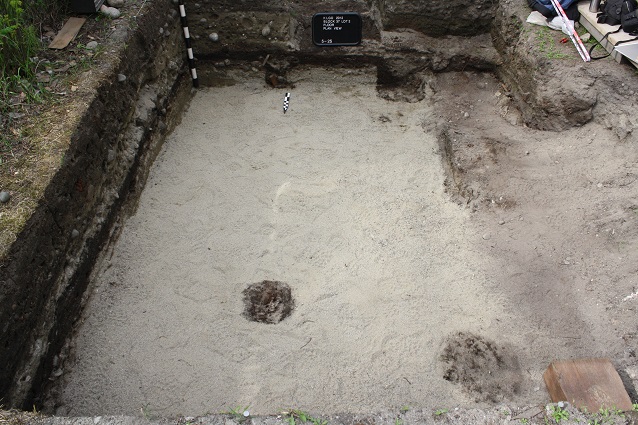
NPS photo
Though the artifacts found at this lot were too jumbled to tell a clear story, not all the data from the Gold Rush was lost. Beneath the various cultural layers of soil, the archeologists found dark stains in the natural sand. These stains were the remains of the pilings that once supported the first structures built on the tidal flats. Although the wood from the pilings rotted away, it left behind organic stains.
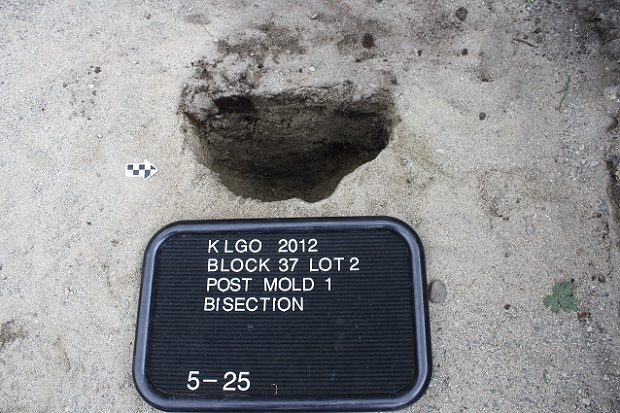
NPS photo
Excavation is inherently destructive, so the archeologists took extensive notes on their findings to capture as much information from the site as they could. The archeologists produced notes, maps, photographs, and drawings that will allow future researchers to draw their own conclusions from the materials.
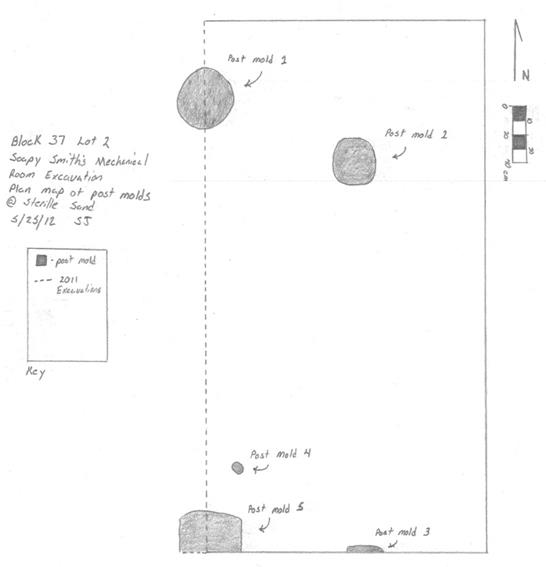
NPS image
Last updated: March 17, 2021
